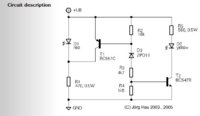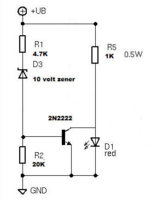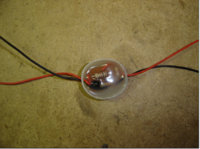thelowlife
XS650 Addict
I'm an electrician and instrumentation techonlogist by trade and I've been playing around with the idea of creating a small battery status indicator circuit This circuit could be useful to indicate simply and easily if the bike is charging or not, and to quickly check you battery status after periods of inactivity or for peace of mind. I'll make is small enough to put inside a small project box and can be mounted easily to your bike.
It will consist of a 10 LED light bar (5 green, 3 orange, 2 red). Each LED that is lit up will be within a certain adjusted range that you can either specify or I can create a standard for, as an example all lights would indicate a 13.5 volts (indicating when bike is running and charging properly), everything but one green light can indicate 12 volts when bike is not running, and any other combination will obviously indicate a lower voltage.
As an option I could put a momentary push button to reduce current drain, and only light the LED bar when a status check is required.
I haven't worked out the specific logistics or created my prototype but I was just wondering if there would be any interest in this little circuit. If there proves to be enough interest I might be able to make this available for cost of parts, which is a couple dollars. I just figured that this simple circuit could help a lot of people worrying about their battery and charging systems, and potentially catch an issue before it becomes a huge problem.
So is there any real wishes or interest in something like this or waste of time?
It will consist of a 10 LED light bar (5 green, 3 orange, 2 red). Each LED that is lit up will be within a certain adjusted range that you can either specify or I can create a standard for, as an example all lights would indicate a 13.5 volts (indicating when bike is running and charging properly), everything but one green light can indicate 12 volts when bike is not running, and any other combination will obviously indicate a lower voltage.
As an option I could put a momentary push button to reduce current drain, and only light the LED bar when a status check is required.
I haven't worked out the specific logistics or created my prototype but I was just wondering if there would be any interest in this little circuit. If there proves to be enough interest I might be able to make this available for cost of parts, which is a couple dollars. I just figured that this simple circuit could help a lot of people worrying about their battery and charging systems, and potentially catch an issue before it becomes a huge problem.
So is there any real wishes or interest in something like this or waste of time?




